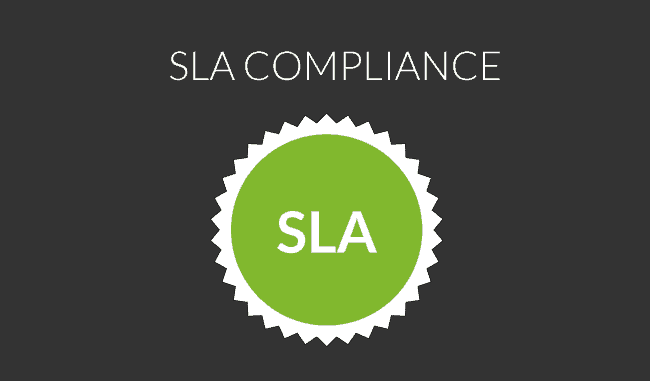SLA Compliance: Four tips to avoid bad communication
Some years ago a well-known communication group, which was a Pandora FMS customer, concluded that it was more financially interesting to outsource their information systems to an outsourcing company. The contract included servers, applications, and software, along with all professional operating and maintenance services for 10 years.
Shortly after starting, the normal setbacks of this type of operation arose. “This is not in the contract”, “the system is not obsolete and fullfils its function”, “we have improved certain operations …”, etc. But our client was faced with a really serious problem, the SLAs compliance reports were written by the same company, who provided the service, being both judge and judged.
This situation caused bad communication in every way:
- Among the different business IT departments: complaints from internal users were often not answered by IT, as the communication line was unclear and the responsibility was not well defined. In the case of incidents, the line of communication that should go from the Outsourcer to the internal controller and from here to the CIO, was reversed. The incident was discovered by the internal user, who in turn raised it to its manager, from here to the director of the business area, from here to the CIO, to the controller, to the Outsourcer project manager … In short, time, patience and credibility which does not help in our goal to solve bad communication (SLA compliance)
- In case that the incident is recognized, which does not always happen, we enter the next phase, who has the responsibility ? Systems, development, communications, or security? It is an issue that should not affect our client, since he is paying for a comprehensive service. But this is not always the case, and in some cases of recurrent incidents, the solution is usually to create a crisis committee, in which 20 people meet and are locked in a room throughout the day, each group has its monitoring tools and their own reports.
- If the committee does not draw any conclusions, then we proceed to the mega crisis committee, 20 people in a room, plus the CIO, plus the most suspicious manufacturer’s representative and his presale.
Our advice in these situations:
- It is impossible for a multidisciplinary group to understand, if they do not share the same information, in the same format and with the same metrics. Otherwise, we will meet a group that does not feel alluded or responsible for the situation, the outsourcer will be very calm, as much as possible, since that committee is part of their powers, and that devoted time, it is time in which your people are working.
- The outsourcer is our partner when talking about the operation systems, is not our partner in the business, so we do not feel involved in the actual losses that the incident is causing. It is necessary to convey to them unequivocally what these costs are.
- The only real pressure tool ,that the client has, is the penalties for breach of service. But they are difficult to apply, if not properly documented. And let’s not forget that the systems are no longer under your control. The customer (CIO) takes extra effort to collect this information.
- And do not even consider the possibility that the incident is not recognized, or as in our case, there are areas outside the attributions of our outsourcer: internal computing.
Now, the use of Pandora FMS allows you to have reliable information about what is happening with the systems, automatically generating a service level report automatically or on demand, which allows our client to invoke the penalty clauses in case of significant deviations.
Likewise, it allows you to be informed of any incidents that occur in the service, without having to wait for the next report from the provider, or even worse, to discover those incidents through your customer complaints. So this is mostly everything you need to know about SLA compliance.
About Pandora FMS
Pandora FMS is a flexible monitoring system, capable of monitoring devices, infrastructures, applications, services and business processes.
Of course, one of the things that Pandora FMS can control is the hard disks of your computers.
Would you like to know more about what Pandora FMS can offer you? Discover it by entering here: https://pandorafms.com
If you have more than 100 devices to monitor, you can contact us through the following form: https://pandorafms.com/en/contact/
Also, remember that if your monitoring needs are more limited you have at your disposal the OpenSource version of Pandora FMS. Find more information here: https://pandorafms.org
Pandora FMS’s editorial team is made up of a group of writers and IT professionals with one thing in common: their passion for computer system monitoring. Pandora FMS’s editorial team is made up of a group of writers and IT professionals with one thing in common: their passion for computer system monitoring.




















